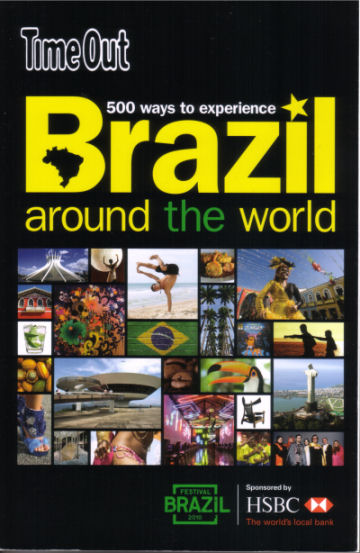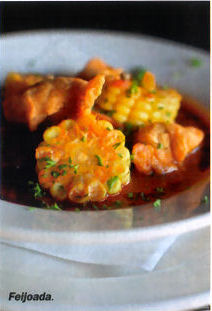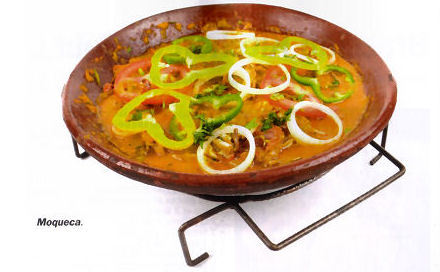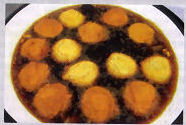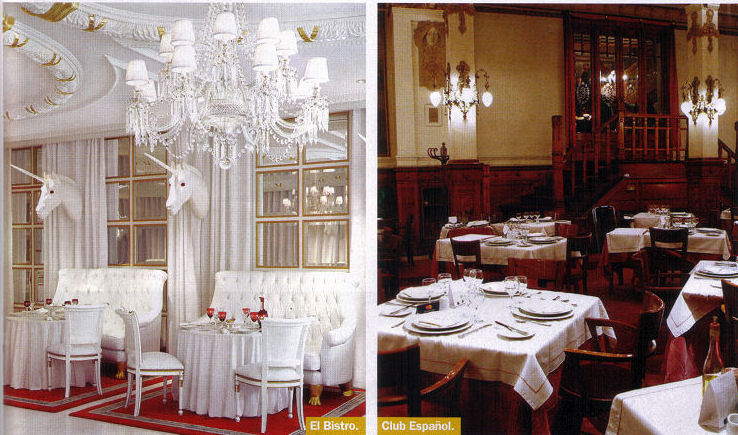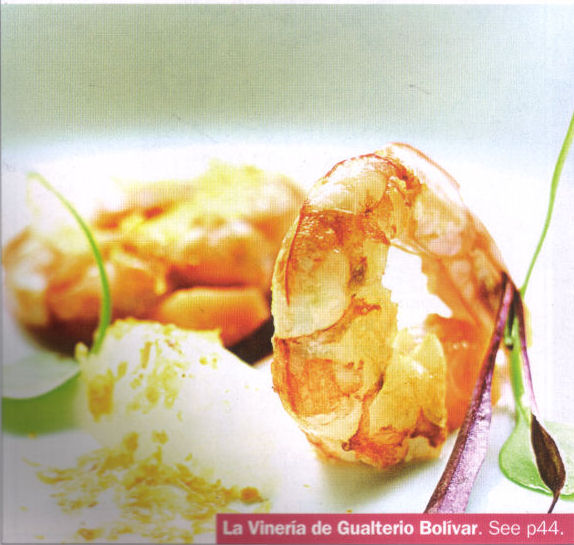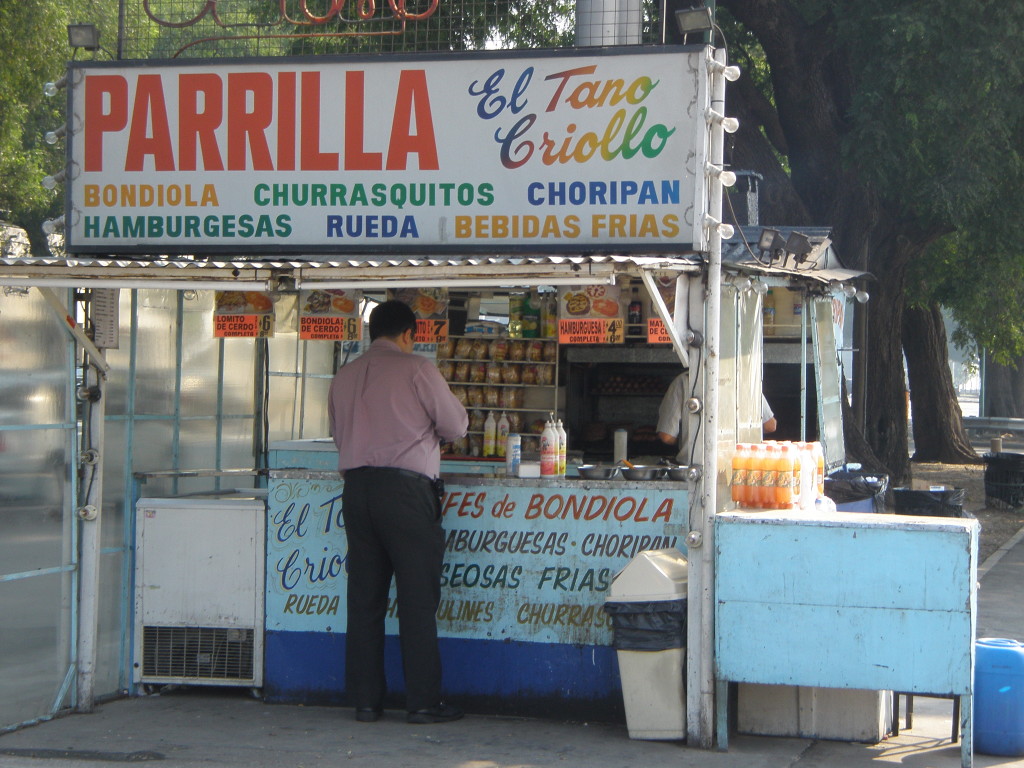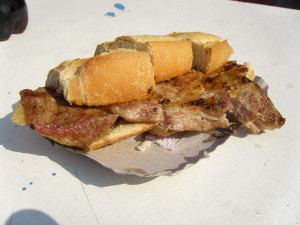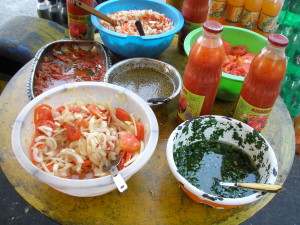Passport Magazine
February 2009
pgs 34-40Lo que pasa en Buenos AiresThis exciting and inexpensive South American city is well known for its historic landmarks, beautiful parks, and excellent art museums. It is also an easy-going culture, where stopping to chat with friends, lingering over a coffee in a sidewalk café, or enjoying a glass of one of the country’s great wines at a local bar, all take precedence over any business appointment or preplanned event. Despite being located in a very conservative, Catholic with a capital C, country, the city of Buenos Aires itself is a bastion of liberality. Same-sex domestic partnerships have been legal since 2003, with a proposed full marriage ill up for debate. Gay bars abound, and restaurants that cater to our set are scattered throughout the various neighborhoods. Meanwhile, curious travelers will discover a plethora of entertainment, shopping, and nightlife options to rival any of the world’s great cities.
RESTING YOUR HEAD
Among the most popular spots for gay travelers are the gay owned bed and breakfasts. the two principal ones are Lugar Gay in the historic San Telmo neighborhood, and Bayres in Palermo, the former being men-only, the latter mixed gender. Another favorite, Posada de Palermo, in Palermo, has wonderfully comfortable rooms, great prices, and one of the best breakfast spreads in the city. For those on a budget, the End of the World Gay Hostel, on the border of San Telmo and La Boca, is a relatively new option. It’s a somewhat seedy neighborhood, but the place is clean and well kept, and transportation is easily available to other parts of town.
Celebrating its first anniversary this year, the self-proclaimed “five-star” Axel Hotel, located just outside of San Telmo in Monserrat, is becoming the new in-spot for the upscale gay traveler. A gleaming architectural triumph of glass and steel, it houses four dozen rooms, two pools (including a completely glass one located on the roof, hovering over a six story open lobby). The Axel’s one drawback is its location on a deserted (at night) industrial street, but then, anyone staying at the Axel is likely to have no problem springing for a taxi to more interesting zones.
Other gay-friendly options include the Art Hotel in Recoleta, which offers up quite nice, if slightly small, rooms at a very reasonable price, and boasts an excellent multilingual staff. On the fancier side is the Faena + Universe, situated on the far side of the refurbished warehouse and dock area known as Puerto Madero. It’s a fair hike from the rest of town, and sort of like taking a room at the South Street Seaport in New York or Fisherman’s Wharf in San Francisco. It’s one of the finest hotels in the city and it features two excellent restaurants, a couple of delightful bars, and its own art galleries.
Meanwhile, the new Palacio Duhau Park Hyatt is attracting jet setters to its converted mansion packed with amazing artwork, several restaurants, and one of the few true wine bars in the city. Smaller boutique hotels that offer more personalized service are springing around the city as well. The two most well known, and among the best options, are the Home Hotel and the Bobo, both located in the heart of Palermo’s trendy design district.
EAT, DRINK, & BE MERRY
Porteños (port dwellers), as the local citizens call themselves, seem to spend more time in restuarants and cafés than they do at home or work. It does help that the North American/European penchant for “turning tables” is non-existent in Buenos aires; once seated, the table is yours until you care to leave, whether you order anything past your first coffee, cocktail, or appetizer…or not. It would be unthinkable of a restaurant to even suggest that you might order more, or free up the space for a more spendthrift customer – it’s just not done. With free Wi-Fi access in most of the central part of town, whiling away the day at a table is de rigeur.
Among the spots in the city where you can enjoy a quiet dinner, Desde el Alma in Palermo is considered by many to be the most romantic in town. A converted home with small tables and comfortable chairs stuck in various nooks and crannies, this hot spot offers creative takes on Argentine cuisine, and you can count on virtually every customer being paired up for date night.
On the gay front, the petite La Olla de Felix, located in the heart of Recoleta, can’t be beat. Here you will find simple, classic French food at a great price from the former chef of the Ritz-Carlton in Paris. Empire Thai, located in the heart of downtown, is home to some of the better Asian food in the city. Owner Kevin Rodriguez, a former banker, fell in love with this restaurant while visiting Buenos Aires on a business trip. When he heard the owners were selling it, he quit his bank job and bought the place.
For those who want truly exquisite culinary experiences, the modern Argentine stylings of various chefs await your discovery. These include: Germán Martitegui’s trendy and expensive Casa Cruz in Palermo where an ever present bevy of cute youngsters brings some of the best food in town to your table; Martin Molteni’s amazing cuisine at Pura Tierra is served up in a beautiful old home in Belgrano; Rodrigo Ginzuk’s stunning French-Argentine fusion cuisine at Maat, a gorgeously restored palacio in Belgrano – officially a private club, but open to the public when not filled with members; and Fernando Mayoral’s borderline “molecular gastronomy”style served up at Thymus, in Palermo. All are don’t miss spots.
If you find yourself in need of English-speaking company, Amaranta Bistro in Recoleta prepares an odd mix of US, Mexican, and Italian cooking in a café environment with virtually all customers speaking English in one form or another. They also offer one of the better brunches in town.
THE NIGHT IS YOUNG
There’s no one district in the city that is particularly gay, though there’s been a push to declare historic San Telmo as the heart of the gay community. This is an odd choice, given that outside of one B&B (and the nearby new hostel and hotel, both mentioned above) and the odd business here and there, there’s no gay nightlife to speak of here.
Most nightlife, gay or straight, begins late in Buenos Aires. It’s not unusual for a club to open around midnight, with bars opening not much earlier. Drag and stripper shows are popular in many venues. One of the few places open for an earlier drink is Flux Bar, located in Retiro near to downtown, where an after-work crowd gathers in an underground space hosted by owners Jamie Taylor and Ilia Konon.
A hotspot for gathering (locally called a punta de encuentro) is the area in Recoleta near to the intersection of avenues Pueyrredón and Santa Fé. Here you’ll find the casual café El Olmo, a spot to meet with friends before heading out for a night of drinking and dancing, as well as a place to pickup local taxi-boys, or hustlers. Within a few block radius are several gay bars, including the ever popular Search for its late night shows, Km Zero for its dancers, and Angel’s Disco for its transvestite and rough-trade crowd. On the far side of Recoleta, bordering on Palermo, the city’s largest barrio, are the large clubs Amerika and Glam. These places are generally packed with boys who want to dance the night away, and/or disappear into the “dark rooms.” Just a few blocks away is the new kid in town called Sitges, with a mix of young gay, lesbian, and straight folk in a large lounge-style space that rivals Amerika in size, though with a focus on drag shows and lots of drinking.
FIRMING AND TONING
After a few late nights of drinking, dining, and dancing (not to mention sightseeing packed days) you’ll probably need to relax and rejuvenate a bit. Full spa treatments are available at almost all the luxury hotels, regardless of whether you’re a guest of the hotel or not. A few hours spent at the popular Markus Day Spa in Recoleta will set you feeling right as well. Inexpensive massages are available throughout the city: most hotels have someone on call or at least someone to recommend. If you’re in or near Recoleta, the Centro Cultural Chino along Santa Fé doles out deep-tissue acupressure-style massages. The same is available at any of several locations in Belgrano’s small Chinatown neighborhood.
When it comes to working out, porteños, for the most part, aren’t into the whole muscle building world. Gyms are social spots, and working out is more for simply keeping healthy and looking good rather than developing large biceps. Most gyms, and they’re all over the city, offer up daily or weekly rates that are quite inexpensive. Amongst the gay set, the friendly and fairly “hot” gym is the American Hot Gym in Recoleta. The one real “chain” gym in the city is called Megatlon, a very sleek, modern group with spaces in multiple locations. They cater to the expat and wealthy crowd, with a large number of gay men in attendance, and their prices are pretty much the same as you’d pay in the States.
SHOP TILL YOU DROP
While most travel guides will send you off to the famed pedestrian mall that is Calle Florida, the truth is, you won’t find anything there that you can’t find back home, including the same brands, and probably at the same price. Where Buenos Aires stands out is with its legion of young, hip designers.
For the designer set, head off into the aptly named Palermo SoHo. Here, you’ll find the streets lined with one shop after another, interspersed with enough restaurants and cafes to give you a spot to rest while you shop. For the guys, start off along Gurruchaga, in the 1700 block (near Costa Rica Street) at the well known El Cid, the best spot for anyone into the preppy look. Some of the hottest sweater designs, sport jackets, and classic style shirts line the racks here. For the gals, the neighboring Vietnam: Moda offers up some trendy local takes on Asian design.
If you’re a bit more informal than the preppy type, visit the completely hip and casual Antique Denim shop just a block away, where new takes on old jeans and vintage clothing makeovers are the order of the day. A mere block further on you’ll find yourself at Bolivia, which somehow manages to combine gay style and equally intriguing designs for women as well.
Moving over to the parallel Armenia Street, women discover trendy suburban and country style looks at Awada, or edgy, urban designs at Janet Wise . For those missing out on their high end skin care products, Kiehl’s of New York has just opened up a Buenos Aires branch on the same block, bringing in their whole range of products direct from the Big Apple.
There are plenty of other shops to poke your head into along the way, but there are two musts to end your neighborhood stroll. For the obys, there’s simply no gayer design shop than Garçon García. Here the clothes are beyond trendy and you may need to use a fire extinguisher on the staff just to cut back on their flaming.
Meanwhile, the lesbian set, especially those with a true shoe fetish, have to end their walk at Lucila Iotti where some of the hottest designs in multi-textural footwear are on display in the teensiest of shops.
Outside of designer clothes, Buenos Aires is, of course, famous for its leather. The heart of the leather world, offering everything from clutch purses to full length dusters, is the three block wholesale leather district along Murillo Street. This is where you’ll find not only the best designs, but the best prices. Probably the best known shop for visitors is 666, conveniently located along the street at that same address.
If you’re looking for home furnishings and décor, by far the best spot to head is the Buenos Aires Design Center, located in the heart of old Recoleta. The design center is a two story complex containing a couple dozen shops, each specializing in one form or another of objets d’art for the home. If you reach the end of the shop till you drop day here, the upper level has a selection of restaurants, from the very casual Hard Rock Café to Primafila, one of the better Italian spots in the city and a renowned spot for celebrity watching.
ART = LIFE
Buenos Aires is known for its art and architecture, and there are wonderful museums and galleries throughout the city to explore. For those who simply want a taste of what the city has to offer, there’s a convenient strip of museums, sort our own Museum Mile, that begins at the Palais de Glace with its photo and plastic arts exhibits, generally with a historical and political bent; the Recoleta Cultural Center, a free multi-space museum cum gallery that hosts a regularly changing array of works by contemporary and classic Argentine artists; the Bellas Artes, or fine arts museum, with its stunning collection of 17th- to 19th-century European art; the Museo Nacional de Arte Decorativo, a beautifully restored palace with each room decked out from a different colonial period, showing off the changing fashions of home design over the last two centuries; and MALBA, one of the finest private collections of modern and contemporary Latin American art. If you only have time to visit one museum, I highly recommend the Xul Solar museum – they say there’s a fine line between genius and madness, and this artist’s work may be one of the most amazing demonstrations of that truism.
Of course, you may prefer art that will end up on your walls at home. While there are galleries throughout the city, there is also one spot where some of the best are concentrated, the short, two-block Arroyo street on the edge of hte downtown area. Centered around the Sofitel hotel, this duo of blocks hosts galleries that contain everything from centuries’ old classic European art at places like Santo Stefano and Renoir, to contemporary galleries such as Palatina, Aldo de Souza, and the Holz that showcase local artists.
If antiquing and flea market wandering is more your style, you can’t miss the weekly Sunday afternoon outdoor market in San Telmo, centered around the Plaza Dorrego and stretching out along the main street of Defensa. During the week, the same Defensa street is home to some of the finest antique shops in the city, and an afternoon of browsing will likely net you something for your collection.
Passport magazine is a relatively new, ultra-slick, ultra-hip gay travel magazine. My friends Don Tuthill and Robert Adams, respectively the publisher and editor-in-chief, who have owned and run QSF magazine for many years, launched this publication recently. It has received industry accolades. They asked me to come along and write the occasional article for this venture as well.





, starting to revamp the entire dining section. Hopefully, I’ll get another round with them and get to complete the process, and take it on from there.
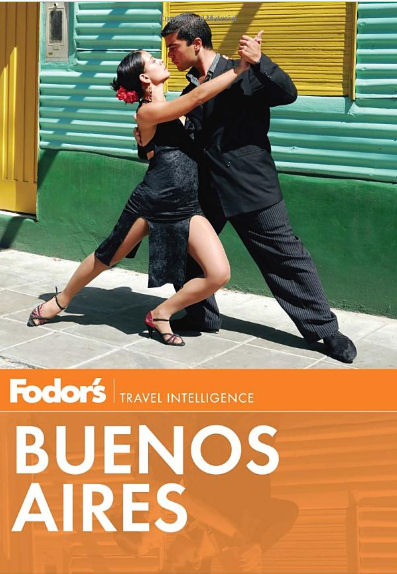
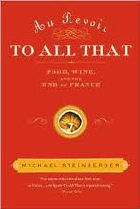 No question I’m late to the party on this one, but then, it wasn’t as if copies of Michael Steinberger’s Au Revoir to All That are just laying around in bookstores in Buenos Aires. Were it not for my eReader, I doubt I’d yet have latched on to it. But, I did get around to it this last week. And I’m afraid I’m going to be the curmudgeon at the party. The book has received glowing reviews from virtually every person who has written one. And, I don’t get it.
No question I’m late to the party on this one, but then, it wasn’t as if copies of Michael Steinberger’s Au Revoir to All That are just laying around in bookstores in Buenos Aires. Were it not for my eReader, I doubt I’d yet have latched on to it. But, I did get around to it this last week. And I’m afraid I’m going to be the curmudgeon at the party. The book has received glowing reviews from virtually every person who has written one. And, I don’t get it.